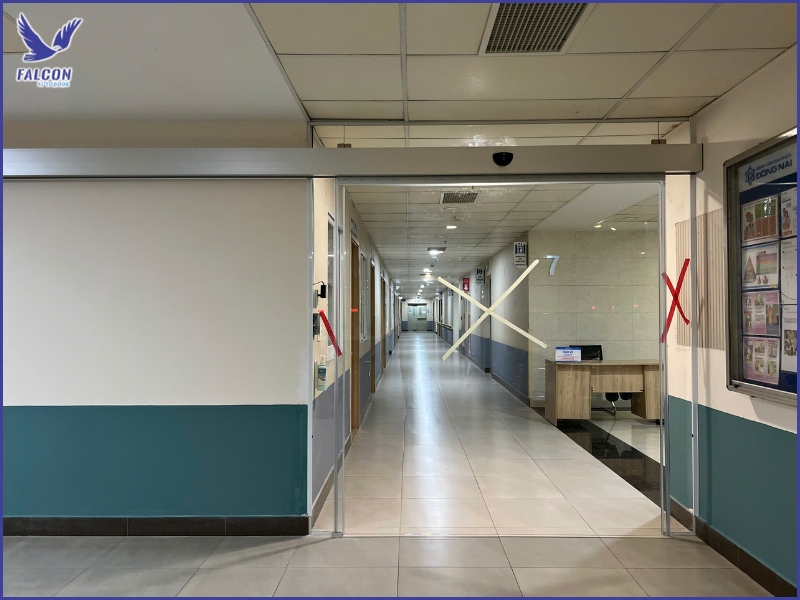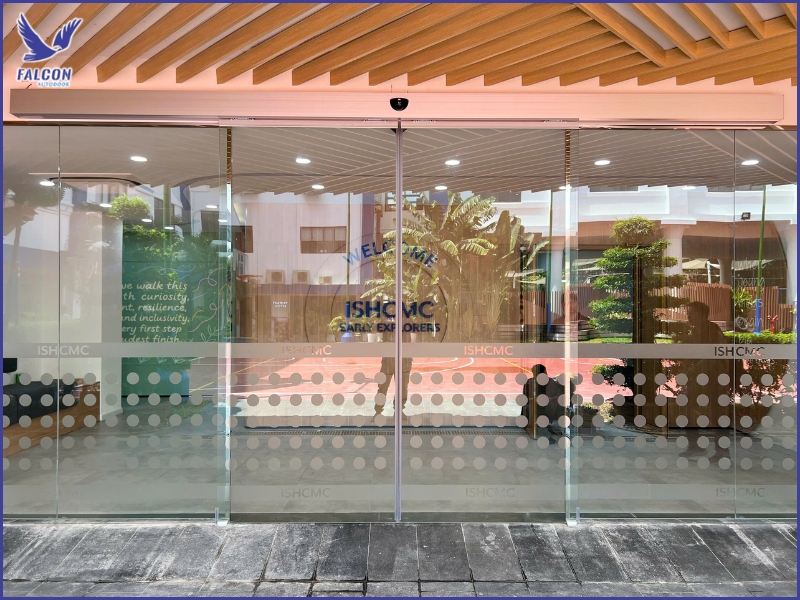How to calculate size & load capacity for the right automatic door motor
Correctly calculating door size and load is essential for stable, long-lasting operation of an automatic door motor. In this guide, Thuy Linh Long explains how to determine the right specifications so you can select the most suitable motor for your project.
1. Why size and load calculations matter when choosing an automatic door motor
The motor is the “heart” of an automatic door, responsible for every open and close cycle. If size or load capacity is chosen incorrectly, the door may run inefficiently, wear out quickly, or create safety risks. Proper calculations protect performance, lifespan, and user safety from day one.
1.1 Impact on operating performance
When the motor is correctly matched to the door load, movement stays smooth, stable, and responsive to traffic demands. An undersized motor leads to slow travel, sticking, and excessive noise that undermines daily usability. Right-sizing preserves comfort, cycle speed, and consistent reliability.
1.2 Determines equipment lifespan
A motor that operates beyond its limit will degrade faster, generating higher repair and replacement costs. Accurate sizing keeps the motor working within its design envelope, reducing heat and strain on gears and belts. Over time, this translates into fewer failures and better value.
1.3 Ensures user safety
Overloaded systems can stall mid-travel, move at the wrong speed, or lose control unexpectedly. Such behavior increases the likelihood of incidents at the doorway. Selecting the correct motor protects the mechanism and maintains a safe environment for all users.

2. Core specifications to consider for automatic door motors
To choose an appropriate motor, owners and technicians should understand the key parameters related to size, weight, and operating conditions. These factors determine the required motor output and the overall stability of the system. A clear grasp of basics prevents under- or over-specifying components.
2.1 Door dimensions: height, width, and thickness
Leaf dimensions are the first input for any calculation. Larger width and height demand greater output to maintain smooth travel and proper acceleration and deceleration. Material thickness also affects mass, which directly influences the force the motor must deliver.
2.2 Door leaf weight
Total mass drives the load rating the motor must handle. For reference, 10 mm tempered glass weighs about 25 kg/m², while wood or steel leaves can be two to three times heavier. If actual weight exceeds the motor’s rated capacity, expect vibration, slow cycles, and shortened service life.
2.3 Traffic volume and duty cycle
Busy facilities such as malls or hospitals require motors designed for high-frequency cycling and continuous duty. These models use heavier bearings, better cooling, and robust control logic to sustain performance. In private homes or low-traffic sites, a medium-duty motor will typically suffice.
2.4 Environmental conditions
Outdoor or semi-exposed installations must tolerate heat, rain, dust, and humidity. Motors should carry appropriate ingress protection and corrosion resistance to match local conditions. Selecting for environment prevents moisture ingress, premature wear, and nuisance faults.

3. How to select an automatic door motor by size and load
Sizing calculations help you determine the necessary output before you buy. Choosing correctly ensures quiet, durable operation and avoids overspending on capacity you don’t need. Use the steps below as a practical baseline.
3.1 Estimating door weight
Door leaf weight = width × height × thickness × material density.
Example: 10 mm glass ≈ 25 kg/m²; wood or steel panels may weigh 2-3× as much. After calculating the total mass, select a motor rated at least 20-30% above the actual load to provide a safety margin.
3.2 Matching motor to door size
- Small doors (≤ 80 kg/leaf): a 60 W motor is generally adequate for smooth cycles.
- Medium doors (80-120 kg/leaf): consider a 90 W motor to maintain speed and stability.
- Large doors (120-180 kg/leaf): choose ≥ 150 W to prevent sluggish starts and early wear.
- As overall size increases, required output rises to overcome inertia and keep acceleration within safe limits.
3.3 Real-world example
A double sliding glass door 2.2 m high by 3.0 m wide in 10 mm glass has a total area of 6.6 m². At roughly 25 kg/m², the door set weighs about 165 kg. In this case, specify a motor of ≥ 150 W to ensure continuous, safe operation in a high-traffic environment.
3.4 Quick reference table
|
Door size (m) |
Estimated weight (kg/leaf) |
Recommended motor |
|
1.0 × 2.0 × 0.01 |
~50 |
60 W |
|
1.5 × 2.2 × 0.01 |
~80 |
90 W |
|
2.0 × 2.5 × 0.01 |
~120 |
120 W |
|
2.5 × 3.0 × 0.01 |
~165 |
150 W |
Notes: Weights are indicative and depend on material and framing. Always verify actual leaf mass and add a 20-30% capacity buffer.

4. Important notes when choosing an automatic door motor
Beyond size and weight, several practical considerations help ensure long-term safety and stability. Building these into your specification reduces downtime and protects warranties. Treat them as best-practice guidelines for any project.
4.1 Choose a motor with headroom above the load
Select a unit rated 20-30% higher than the calculated door mass to absorb real-world variables. This margin limits thermal stress, protects gears and belts, and preserves cycle speed during peak usage. The result is quieter operation and longer service life.
4.2 Prioritize genuine products from reputable brands
Low-quality motors fail early, create noise, and pose safety risks under load. Choosing authentic models from trusted brands like Falcon ensures proven performance, stable parts supply, and clear documentation. It also simplifies commissioning and future service.
4.3 Keep accessories and controls in one matched system
Motors must pair correctly with tracks, rollers, sensors, controllers, and power supplies. Mixed or mismatched components can cause vibration, binding, and erratic behavior. A single-vendor, fully matched kit minimizes compatibility issues and streamlines maintenance.
4.4 Schedule preventive maintenance to extend lifespan
Even high-quality motors need periodic care clean tracks, check sensors, verify speeds, and re-calibrate stops. Routine maintenance sustains smooth travel and reduces unexpected faults. A documented service plan also protects warranty coverage and budget forecasts.

If you need a genuine Falcon automatic door, contact Thuy Linh Long for detailed consultation, on-site surveying, and a transparent quotation. We deliver optimized solutions so your system runs smoothly, quietly, and safely across all building types.
THUY LINH LONG SERVICES TRADING COMPANY LIMITED
DISTRIBUTOR
Address: 243D Vuon Lai Street, Phu Tho Hoa Ward, Tan Phu District,
Ho Chi Minh City, Vietnam.
Tel: +84 28 22497999
E-mail: cuatudong24h@gmail.com
SUPPLIER
KUM YANG MATERIALS CO.,LTD
Address: 124-60, Myeongdong-ro, Hallim-myeon,
Gimhae-si, Gyeongsangnam-do, 50851, Korea.
Tel: 82-55-345-8380










